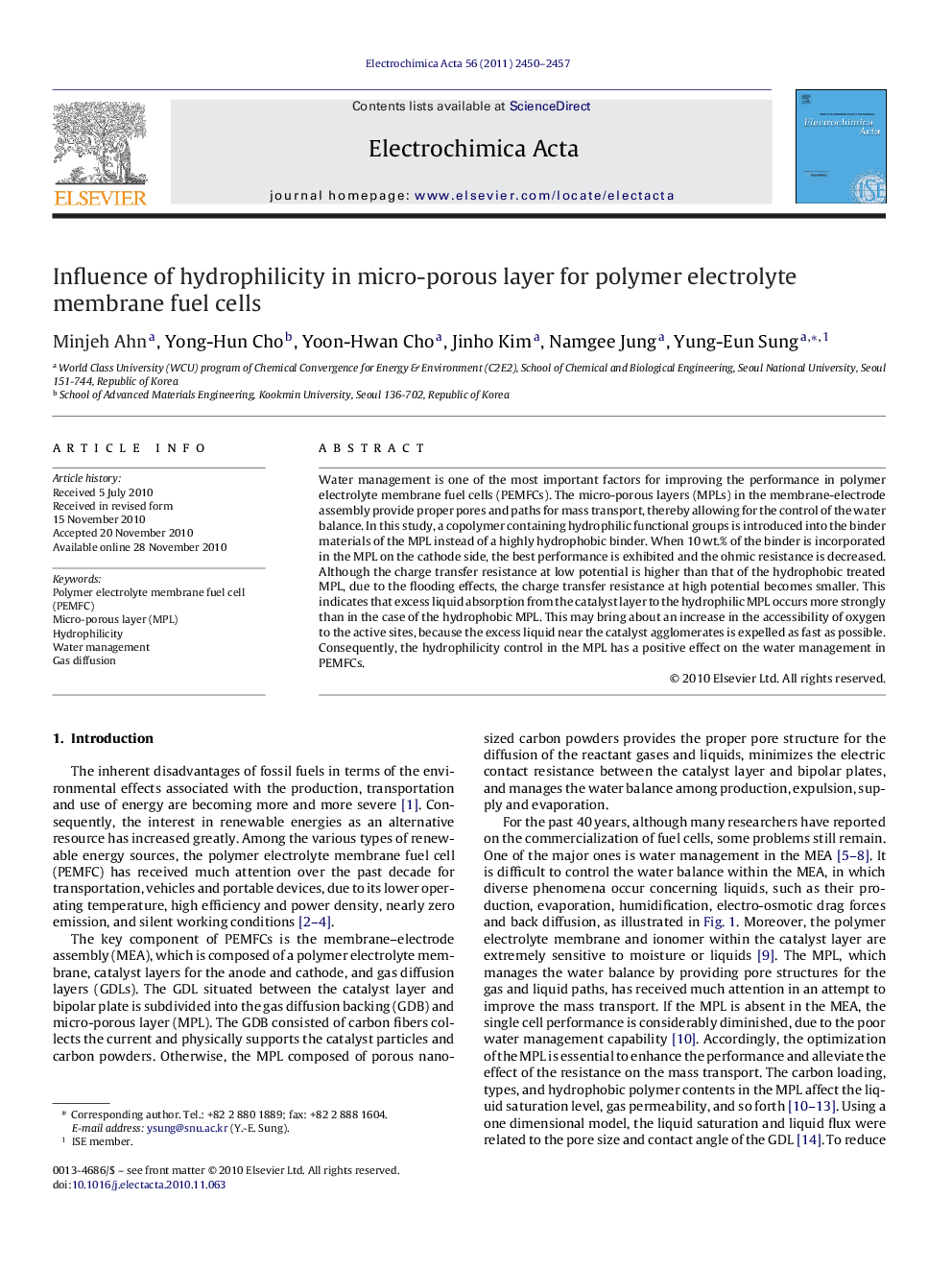| Article ID | Journal | Published Year | Pages | File Type |
|---|---|---|---|---|
| 10269192 | Electrochimica Acta | 2011 | 8 Pages |
Abstract
Water management is one of the most important factors for improving the performance in polymer electrolyte membrane fuel cells (PEMFCs). The micro-porous layers (MPLs) in the membrane-electrode assembly provide proper pores and paths for mass transport, thereby allowing for the control of the water balance. In this study, a copolymer containing hydrophilic functional groups is introduced into the binder materials of the MPL instead of a highly hydrophobic binder. When 10Â wt.% of the binder is incorporated in the MPL on the cathode side, the best performance is exhibited and the ohmic resistance is decreased. Although the charge transfer resistance at low potential is higher than that of the hydrophobic treated MPL, due to the flooding effects, the charge transfer resistance at high potential becomes smaller. This indicates that excess liquid absorption from the catalyst layer to the hydrophilic MPL occurs more strongly than in the case of the hydrophobic MPL. This may bring about an increase in the accessibility of oxygen to the active sites, because the excess liquid near the catalyst agglomerates is expelled as fast as possible. Consequently, the hydrophilicity control in the MPL has a positive effect on the water management in PEMFCs.
Keywords
Related Topics
Physical Sciences and Engineering
Chemical Engineering
Chemical Engineering (General)
Authors
Minjeh Ahn, Yong-Hun Cho, Yoon-Hwan Cho, Jinho Kim, Namgee Jung, Yung-Eun Sung,
